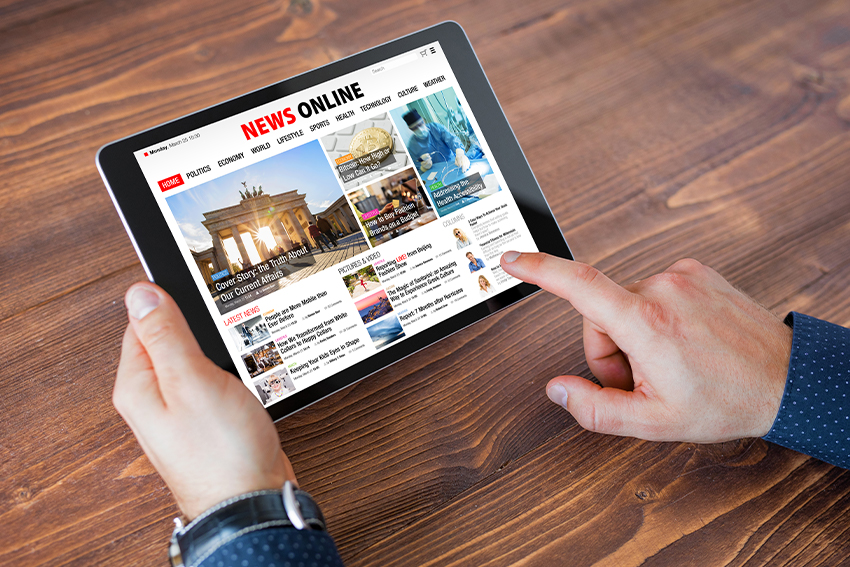The 5-Minute Rule for Popular News
The 5-Minute Rule for Popular News
Blog Article
Popular News - The Facts
Table of ContentsPopular News Things To Know Before You BuyWhat Does Popular News Mean?Indicators on Popular News You Should KnowThe Main Principles Of Popular News
Age is also an aspect in the way people check out the duty of social media sites. Younger social media information customers are more probable to claim it has influenced their learning for the much better. About half of social networks information consumers ages 18 to 29 (48%) state news on social media makes them much better notified, compared with 37% of those 30 to 49, 28% of those 50 to 64, and 27% of those 65 and older.Reporters consider news worths when determining whether or not to cover an occasion or news. Probably the most important aspect of newsworthiness is whether or not the information product being connected impacts a news outlet's target market.
Closeness is very important. Reporters have an interest in points that influence their areas. Study on a state's new tax code most likely will not generate the exact same rate of interest throughout state boundaries. Periodically specialists can assist center a larger nationwide story that impacts greater than just a city or state. In these cases, it is very important to be looking for opportunities where subject issue specialists can offer insight or where similar jobs might be happening locally.
If you are releasing relevant study, loop in MarComm before the article being released so that the pitch can highlight the most recent aspect of the story: the publication of the research study. Occasions and statements that entail top-level figures are most likely to create media coverage. Visits from national numbers commonly call for months of prep work as a result of awaited neighborhood rate of interest.
The Main Principles Of Popular News
We can help mitigate possible reputational threat with these tales while additionally raising the odds of creating insurance coverage. While several of the above news worths are intertwined, human rate of interest stories often stand apart.
Human rate of interest elements can add information worth to other tales that could appear to be lacking in the various other values. The novelty or anomaly of a scenario can aid affect whether an information electrical outlet is likely to cover a story. While this is not an exhaustive listing, inspecting to see if your story or occasion has these high qualities before contacting us will certainly aid you determine which aspects hold the most information worth.
The research study discovers that somewhat majority of all united state grownups sign up for information in some formand roughly fifty percent of those to a paper. sites And in contrast to the idea that youths will certainly not spend for information because details on the internet is totally free, virtually 4 in 10 adults under age 35 are paying for information.
There is additionally significant proof that even more customers could start to pay for news in the futureif authors can comprehend them and offer them well. Fifty percent of those who do not spend for information actively seek information and resemble customers in numerous means. And virtually 2 in 10 of those who don't register for news now show they are inclined to begin to pay in the future.
Popular News - An Overview

People are drawn to news in basic for two reasons above others: A need to be informed residents (paper customers specifically are very inspired by this) and due to the fact that the publication they register for excels at covering particular topics regarding which those subscribers particularly care - Popular News. While there are a host of reasons, the No
Greater than 4 in 10 additionally point out the fact that loved ones register for the same item. More than a third of individuals claim they originally subscribed in reaction to a discount rate or promotion. In print, individuals additionally are relocated heavily to subscribe to obtain promo codes that save them money, something that has untapped implications in electronic.

Rumored Buzz on Popular News
We asked every person that told us they have a regular complimentary resource of news how most likely they would be to pay for it. Greater than a quarter (26 percent) state they my sources would certainly go to the very least somewhat likely to begin paying for itand 10 percent are really or very most likely. These likely payers have a tendency to be news seekers, and they also have a tendency to be people that currently pay for a news membership in addition to the resource they follow totally free.
Of those that do pay, 54 percent sign up for papers in print or electronically, which represents 29 percent of Americans in general. Many of them acquire a print magazine together with their newspaper and spend for two to four information sources in total, some much more. And while 53 percent are veteran clients (5+ years), greater than a quarter (27 percent) have actually acquired their paper subscription within the past year.

Report this page